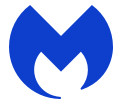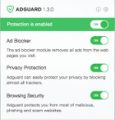What is CompellingState
CompellingState is a potentially unwanted program (PUP) that belongs to the Adware category. Adware is a form of software that delivers unwanted ads on the web-browser. Some of these ads are scams or fake ads designed to trick you. Even the harmless ads can become really irritating. Adware can be installed accidentally and without you knowing about it, when you open email attachments, install free programs.
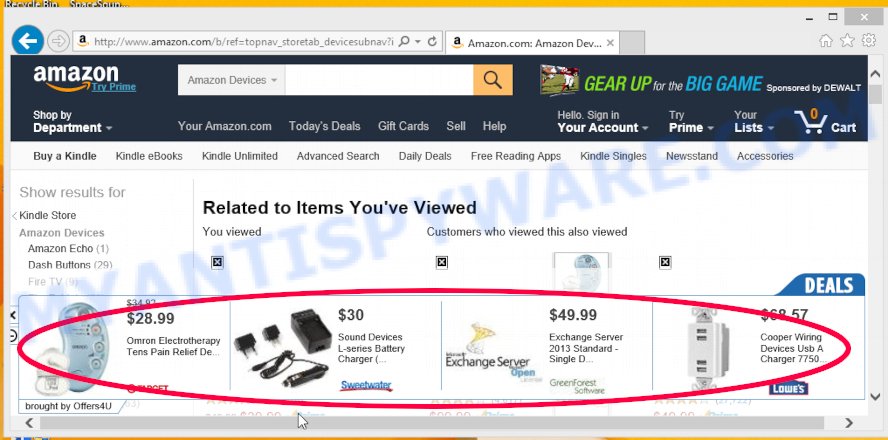
Unwanted ads
When you’re performing searches using the internet browser that has been affected with CompellingState, the search results will be returned from Bing, Yahoo or Google Custom Search. The devs behind this adware are most probably doing this to make advertisement money from the ads displayed in the search results.

Unwanted search ads
Another reason why you need to get rid of the CompellingState adware is its online data-tracking activity. This adware can monetize its functionality by gathering user information from your surfing sessions. This privacy info, afterwards, can be easily sold to third party companies. This puts your sensitive information at a security risk.
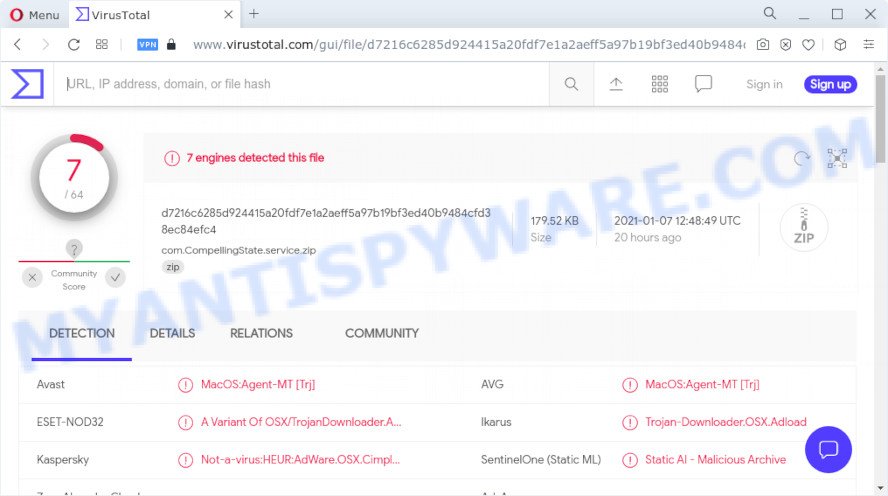
VirusTotal detects CompellingState as adware/trojan
If you want to remove CompellingState adware, you will not succeed, because it is very stubborn. But with the help of the following guide, you surely can get rid of CompellingState completely from your computer.
How does CompellingState get on your MAC
Adware usually is bundled within free programs that downloaded from the Internet. Which means that you need to be proactive and carefully read the Terms of use and the License agreement properly. For the most part, adware and PUPs will be clearly described, so take the time to carefully read all the information about the software that you downloaded and want to install on your computer.
Threat Summary
| Name | CompellingState, CompellingState 1.0 app |
| Detection names | MacOS:Agent-MT [Trj], A Variant Of OSX/TrojanDownloader.Adload.AE, Trojan-Downloader.OSX.Adload, Not-a-virus:HEUR:AdWare.OSX.Cimpli.m, Static AI – Malicious Archive |
| Type | adware, potentially unwanted program (PUP), pop ups, pop up virus, pop-up advertisements |
| Symptoms |
|
| Removal | CompellingState removal guide |
How to remove CompellingState from Mac
In the steps below, we will try to cover the Google Chrome, Safari and Mozilla Firefox and provide general advice to remove CompellingState . You may find some minor differences in your Apple Mac install. No matter, you should be okay if you follow the steps outlined below: delete all suspicious and unknown applications, reset web-browsers settings, use free malicious software removal tools. Read this manual carefully, bookmark it or open this page on your smartphone, because you may need to close your web browser or reboot your computer.
To remove CompellingState, execute the following steps:
- Remove unwanted profiles on Mac device
- Delete CompellingState related applications through the Finder
- Remove CompellingState related files and folders
- Scan your Mac with MalwareBytes
- Remove CompellingState from Safari, Chrome, Firefox
- How to stay safe online
- To sum up
Remove unwanted profiles on Mac device
CompellingState can install a configuration profile on the Mac system to block changes made to the browser settings. Therefore, you need to open system preferences, find and delete the profile installed by the adware.
Click the System Preferences icon ( ![]() ) in the Dock, or choose Apple menu (
) in the Dock, or choose Apple menu ( ![]() ) > System Preferences.
) > System Preferences.
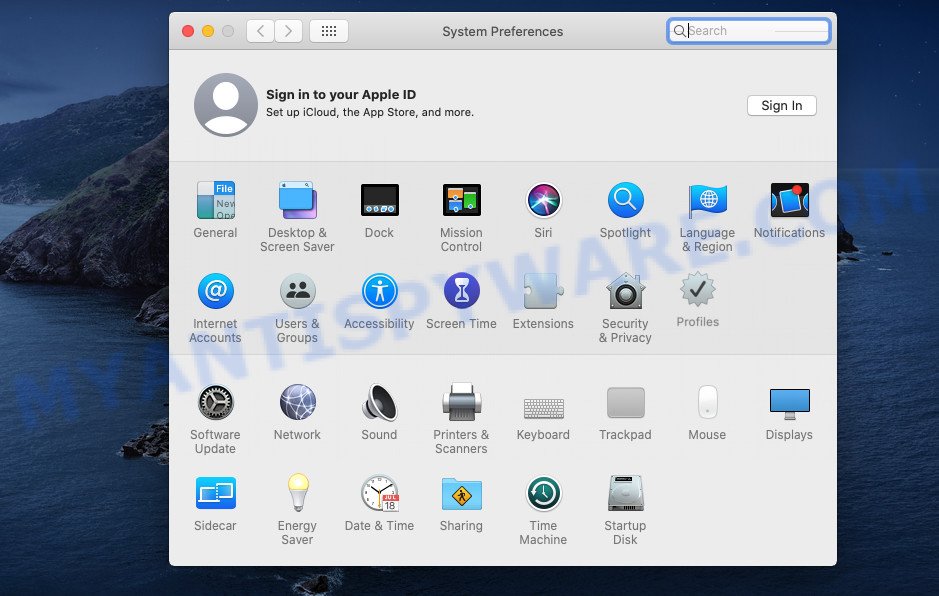
In System Preferences, click Profiles, then select a profile related to CompellingState.
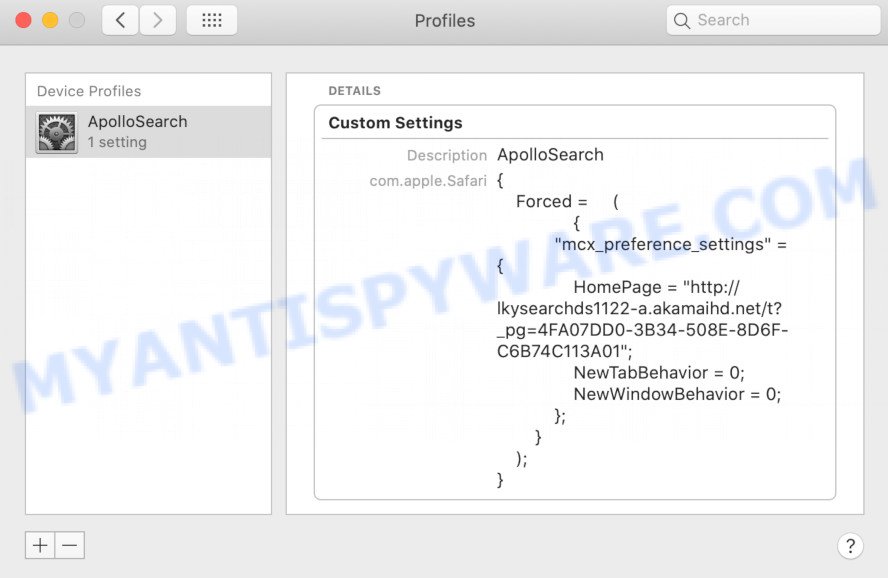
Click the minus button ( – ) located at the bottom-left of the Profiles screen to remove the profile.
Note: if you do not see Profiles in the System Preferences, that means there are no profiles installed on your Mac computer, which is normal.
Delete CompellingState related applications through the Finder
One of the first things to attempt for removal of adware is to check your Mac computer installed programs screen and look for unwanted and suspicious applications. If there are any applications you do not recognize or are no longer using, you should uninstall them. If that doesn’t work, then you may need to use malware removal utility such as MalwareBytes AntiMalware (MBAM).
Open Finder and click “Applications”.
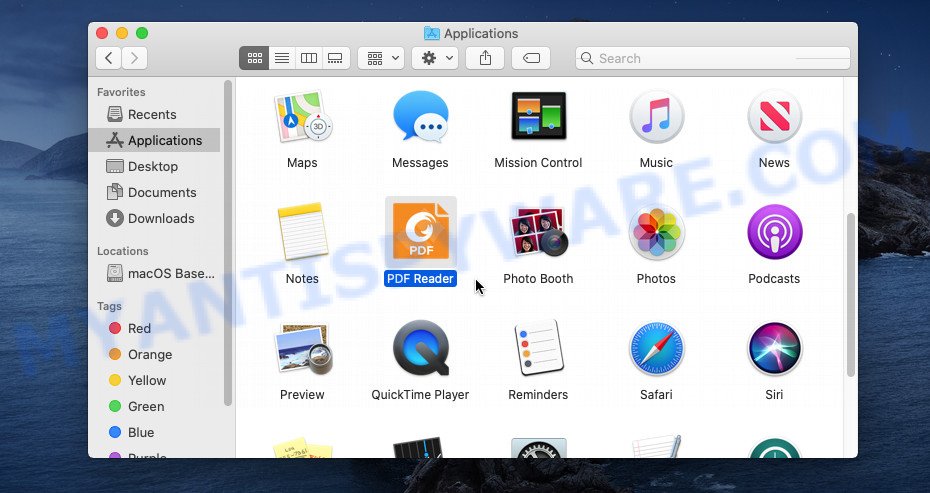
It will display a list of all applications installed on your computer. Scroll through the all list, and uninstall any dubious and unknown applications. Right click to dubious application and select “Move to Trash”. Another method is drag the program from the Applications folder to the Trash.
Most important, scroll through the all list, and move to trash any unknown applications. Don’t forget, choose Finder -> Empty Trash.
Remove CompellingState related files and folders
Now you need to try to find CompellingState related files and folders, and then delete them manually. You need to look for these files in certain directories. To quickly open them, we recommend using the “Go to Folder…” command.
Click on the Finder icon. From the menu bar, select Go and click “Go to Folder…”. As a result, a small window opens that allows you to quickly open a specific directory.

Check for CompellingState generated files in the /Library/LaunchAgents folder

In the “Go to Folder…” window, type the following text and press Go:
/Library/LaunchAgents
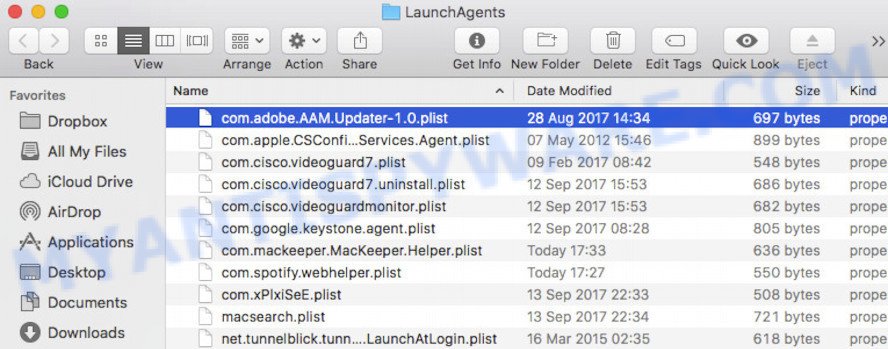
This will open the contents of the “/Library/LaunchAgents” folder. Look carefully at it and pay special attention to recently created files, as well as files that have a suspicious name. Move all suspicious files to the Trash. A few examples of files: com.machelper.plist, macsearch.plist, installapp.plist, CompellingState.plist and search.plist. Most often, browser hijackers, adware and PUPs create several files with similar names.
Check for CompellingState generated files in the /Library/Application Support folder

In the “Go to Folder…” window, type the following text and press Go:
/Library/Application Support
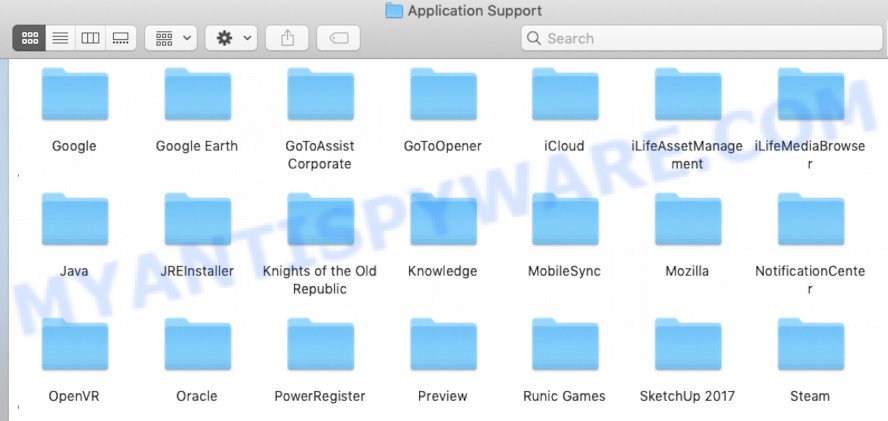
This will open the contents of the “Application Support” folder. Look carefully at its contents, pay special attention to recently added/changed folder. Move all suspicious folders to the Trash.
Check for CompellingState generated files in the “~/Library/LaunchAgents” folder

In the “Go to Folder…” window, type the following text and press Go:
~/Library/LaunchAgents

Proceed in the same way as with the “/Library/LaunchAgents” and “/Library/Application Support” folders. Look for suspicious and recently added files. Move all suspicious files to the Trash.
Check for CompellingState generated files in the /Library/LaunchDaemons folder
In the “Go to Folder…” window, type the following text and press Go:
/Library/LaunchDaemons

Carefully browse the entire list of files and pay special attention to recently created files, as well as files that have a suspicious name. Move all suspicious files to the Trash. A few examples of files to be deleted: com.installapp.plist, com.macsearch.plist, com.search.plist, com.machelper.plist and com.CompellingState.plist. In most cases, potentially unwanted programs, adware and browser hijackers create several files with similar names.
Scan your Mac with MalwareBytes
If you are still having problems with the CompellingState removal or just wish to scan your Mac occasionally for adware and other malware, then download MalwareBytes Anti Malware. It is free for home use, and detects and deletes various unwanted programs that attacks your machine or degrades MAC system performance. MalwareBytes can get rid of potentially unwanted programs, browser hijackers, adware and toolbars as well as malicious software, including ransomware and trojans.
Download MalwareBytes on your computer by clicking on the following link.
21021 downloads
Author: Malwarebytes
Category: Security tools
Update: September 10, 2020
After downloading is finished, close all windows on your Apple Mac. Further, run the saved file. Follow the prompts.
The MalwareBytes will automatically launch and you can see its main window as displayed below.
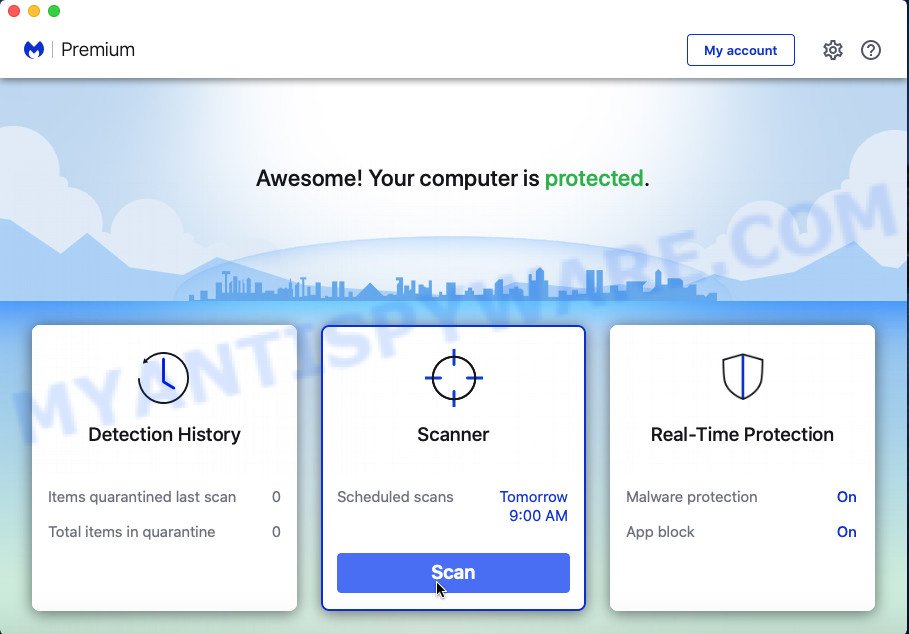
Next, click the “Scan Now” button to perform a system scan for the CompellingState adware. While the tool is scanning, you can see how many objects and files has already scanned.
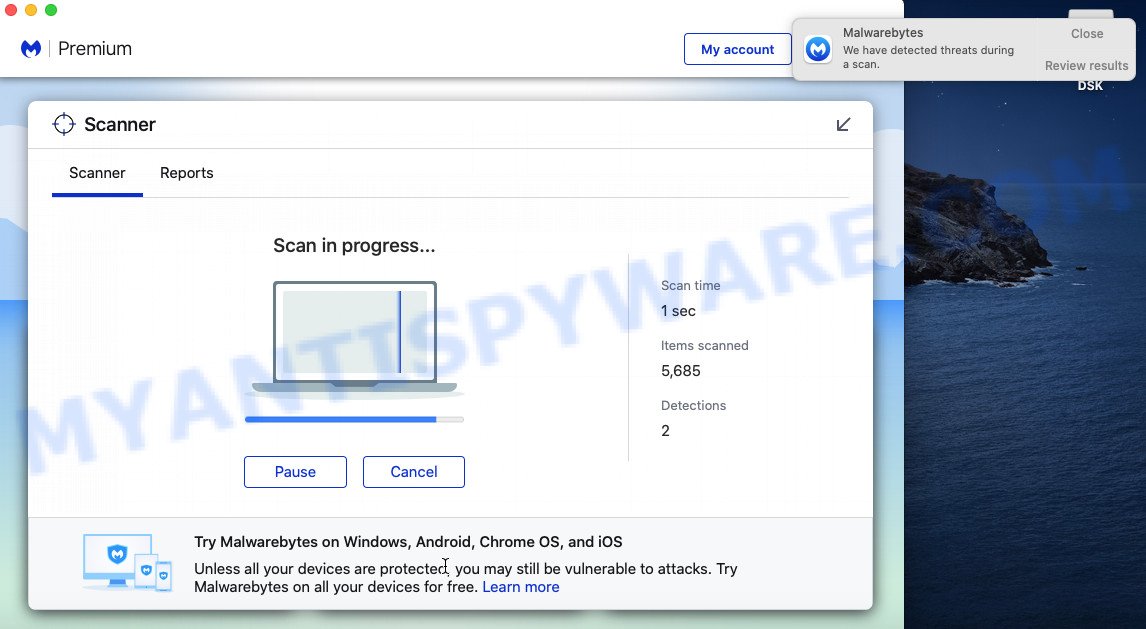
Once MalwareBytes Free has completed scanning, it will display the Scan Results. Once you’ve selected what you want to remove from your computer click the “Quarantine” button.
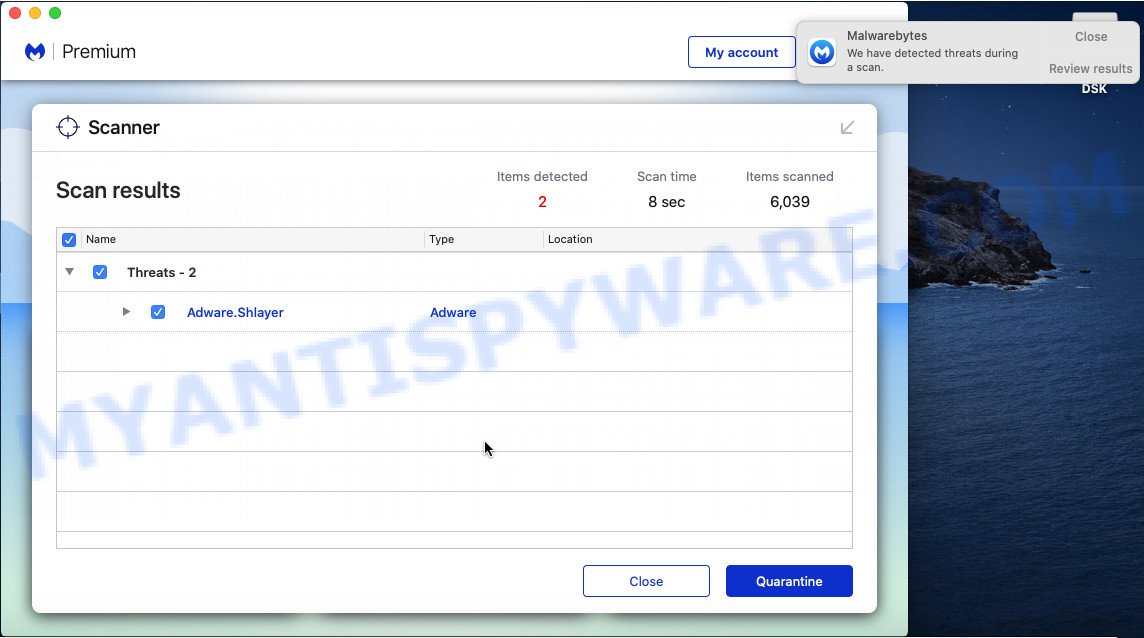
The MalwareBytes will get rid of CompellingState adware and move the selected items to the Quarantine.
Remove CompellingState from Safari, Chrome, Firefox
If you are still getting CompellingState adware, then you can try to remove it by deleting harmful extensions.
You can also try to remove CompellingState by reset Google Chrome settings. |
If you are still experiencing issues with CompellingState adware removal, you need to reset Mozilla Firefox browser. |
|
How to stay safe online
By installing an adblocker program such as AdGuard, you are able to block malicious websites, stop autoplaying video ads and delete a lot of distracting and undesired ads on webpages.
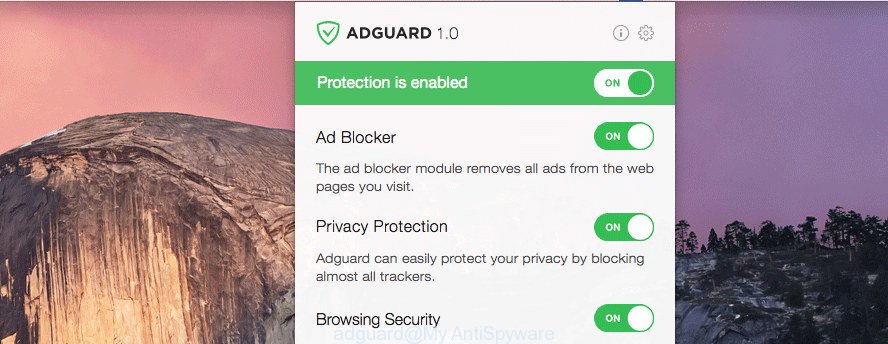
- AdGuard can be downloaded from the following link.
AdGuard for Mac download
3782 downloads
Author: © Adguard
Category: Security tools
Update: January 17, 2018
- After downloading is done, start the downloaded file. You will see the “Setup Wizard” program window. Follow the prompts.
- When the installation is complete, click “Skip” to close the install application and use the default settings, or press “Get Started” to see an quick tutorial which will allow you get to know AdGuard better.
- In most cases, the default settings are enough and you do not need to change anything. Each time, when you launch your MAC, AdGuard will start automatically and stop intrusive advertisements, block malicious and misleading webpages.
To sum up
Now your machine should be free of the CompellingState adware. We suggest that you keep AdGuard (to help you block unwanted pop-up advertisements and intrusive harmful web-sites) and MalwareBytes AntiMalware (MBAM) (to periodically scan your MAC for new adwares and other malware).
If you are still having problems while trying to delete CompellingState from the Safari, Chrome and Firefox, then ask for help here here.
